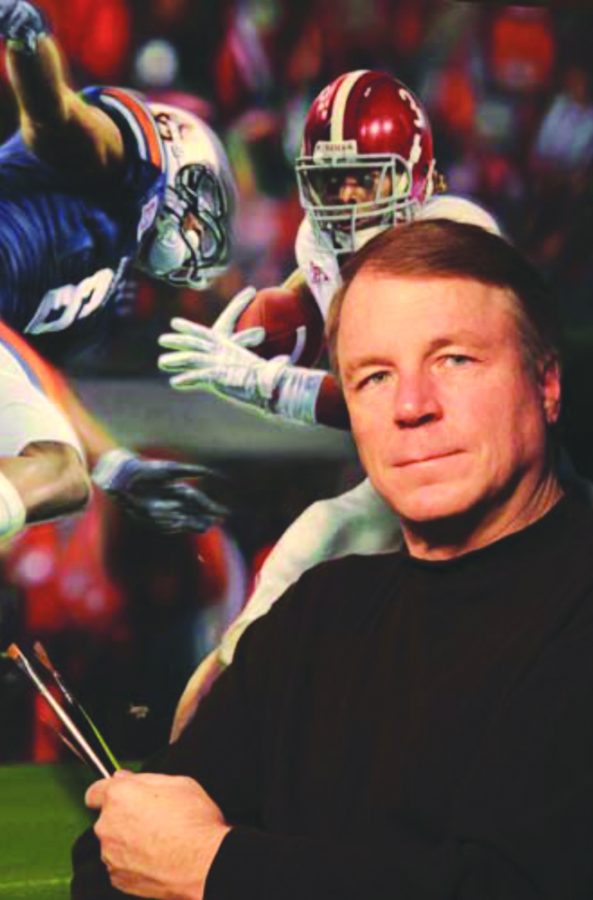The 11th Circuit Court of Appeals ruled in favor of Daniel Moore on June 11 in the latest lawsuit filed against him by the University of Alabama for breach of contract and trademark infringement. Deborah M. Lane, the assistant vice president for University Relations, however, said this battle may not be over just yet.
“The 11th Circuit Court has issued a rather lengthy opinion that declined to adopt the University’s position on some of the issues and remands a few remaining issues to the trial court,” Lane said. “UA will take time to evaluate the circuit court’s decision before making any decisions about the next steps.”
Moore, a Birmingham-based artist known for his depictions of Alabama Crimson Tide football, has butted heads with the University over the course of seven years in a legal battle that has cost the school an estimated $1.4 million in legal expenses alone.
The battle first began in 2005 when the University filed suit against Moore to prevent him from using University of Alabama colors and trademarked logos in his works.
In 2009, a federal judge ruled that painting Crimson Tide uniforms didn’t infringe on the University’s trade dress. However, Moore lost the right to reproduce his paintings on coffee mugs and calendars in this same ruling, prompting both the University and Moore to appeal separate aspects of the decision.
In this latest in the series of appellate cases, UA held that Moore was intentionally violating their trademark rights in the interest of commercially producing his art. Contrastingly, Moore continued to hold that his paintings and prints were artistic portrayals of historic events, fully protected by his First Amendment right to freedom of speech. He believed his works should not be permitted reproduction in certain mediums of art, yet be prohibited in others.
The Eleventh Circuit Court of Appeals at least partially agreed with Moore.
“As evidenced by the parties’ course of conduct, Moore’s depiction of the University’s uniforms in his unlicensed paintings, prints and calendars is not prohibited by the prior licensing agreements,” Federal Judge R. Lanier Anderson ruled. “The uniforms in these works of art are artistically relevant to the underlying works, Moore never explicitly misled consumers as to the source of the items, and the interests in artistic expression outweighs the risk of confusion as to endorsement.”
The court remanded many other decisions made by the lower courts, such as one prohibiting Moore from producing and selling coffee mugs and other memorabilia depicting his artwork. In Moore’s opinion, however, the University’s view of this case was more about who would be benefitting monetarily from the success of the Crimson Tide on the gridiron.
“The legal fight for the University of Alabama was about the money it makes by licensing its trademarks,” said Moore. “The University has stated that a portion of this money helps fund student scholarships, which, I agree, is a very good thing.
“It has been my good pleasure over the years to help fund these scholarships through the art projects that I have voluntarily licensed. Without question, however, the University could have better used the revenue wasted during these proceedings to fund an untold number of additional student scholarships at Alabama, rather than needlessly lining the pockets of high-priced outside attorneys.”
After seven years of battling for the right to showcase Crimson Tide football through his artwork, Moore refuses to hold hard feelings against the school where not only he, but also both of his daughters and wife earned their degrees.
He said he will continue to sign many of his emails with “Roll Tide,” as well as depict the Crimson Tide in his art, despite everything that has happened and may continue to happen.
“This lawsuit isn’t a condemnation of my work by the professors, by the students, by the athletes, by the fans or by those who work at the University for a day-to-day salary,” Moore said. “This is a lawsuit filed by a small group, and I don’t intend to hold the actions of a few against the entirety of the University of Alabama.”









